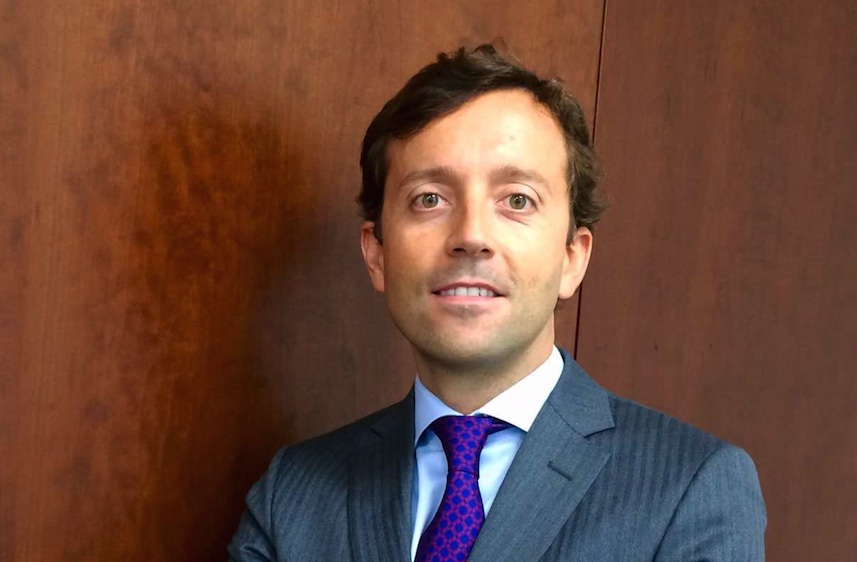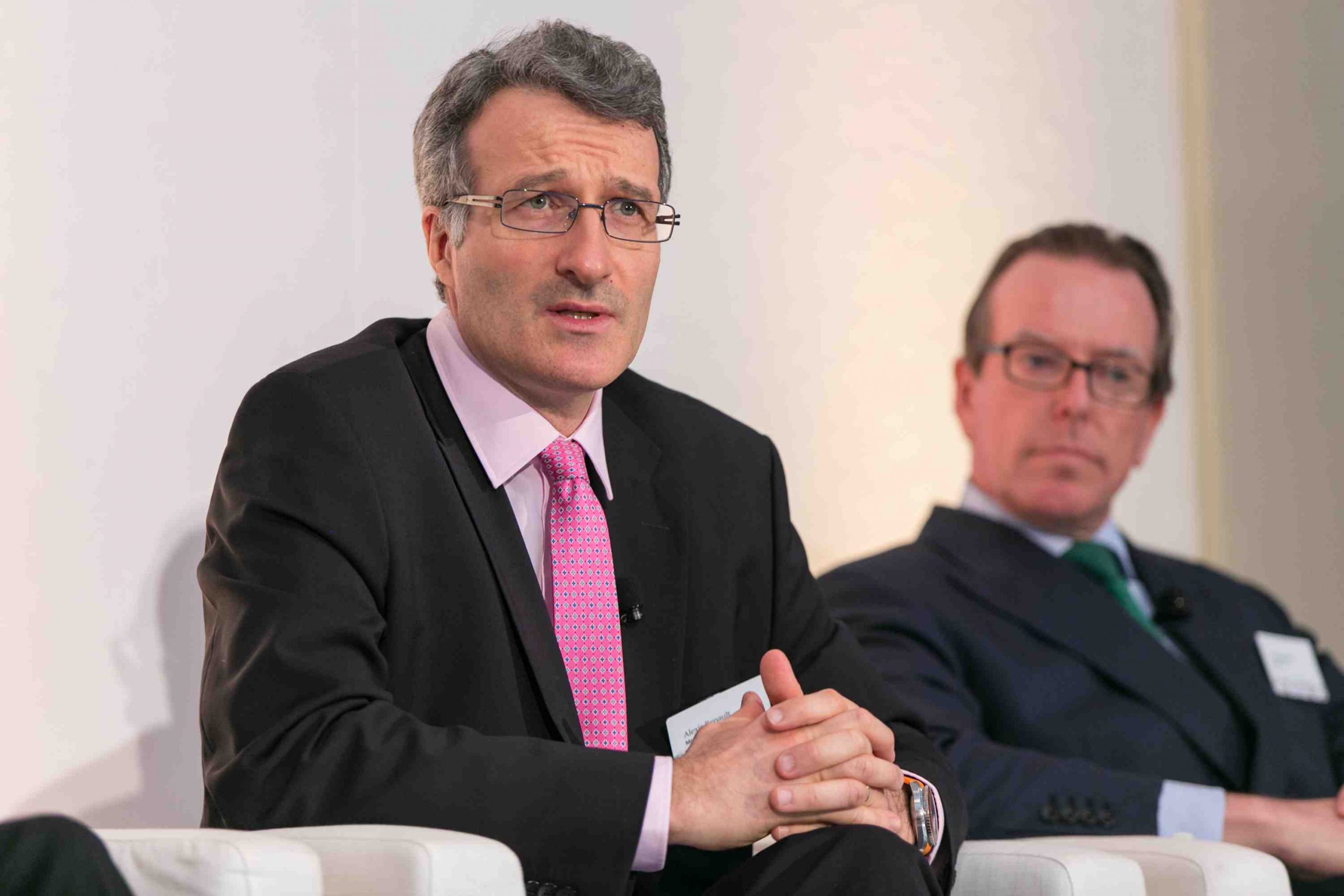According to a report by Greenwich Associates and commissioned by BlackRock under the heading “ETFs in the European Institutional Channel”, the volume of assets in exchange-traded fixed income funds worldwide could exceed $2 trillion in 2025. There are those who draw attention to the high volumes of investment that this vehicle is attracting, but for Vasiliki Pachatouridi, iShares Fixed Income Product Strategist at BlackRock, the growth of debt ETFs should be taken into account in relation to the size of the underlying fixed income market and the investment fund sector as a whole.
In an exclusive interview with Funds Society, Pachatouridi states that, in November 2016, fixed-income ETFs reached almost US $600 billion in managed assets worldwide, with US-based fixed-income listed funds leading the way with US $421 billion in assets under management, followed by those domiciled in Europe with US $139 billion. “While assets managed by fixed-income ETFs have more than tripled since 2009, they still make up a small part of the underlying bond market: in fact, it accounts for less than 1%,” she explains. In fact, Pachatouridi points out that, if broken down by segment, high-yield fixed income ETFs currently have the largest share of the underlying market for this type of bond, at 2.4%, followed by listed fixed income funds with investment grade rating, representing only 1.8% of the underlying bond market with this rating.
As a reason for this growth, it should be noted that, during the past two years 25% of institutional investors have started using ETFs to access fixed income markets, and everything points to the fact that this interest is increasing. In her opinion, the main catalysts for this trend are, “the purchase of bonds by central banks, which are shifting investors to US corporate debt; secondly, the consequences of regulations in trading models that, in particular, have reduced the ability of banks to maintain risky assets and act as liquidity providers within the framework of the main trading model and, finally, the pursuit of profitability.”
Over 55% of investors use ETFs to rebalance their portfolios. In the current market context we witnessed a strong upturn in risk inclination in all segments of corporate debt, which translates into inflows into exchange-traded fixed income funds. “November was a record month for TIPS ETFs (US bonds protected against inflation), which raised $ 2.4 billion, as inflation outlooks rose in the face of signs of upward pressure on prices, and the translation into practice of monetary policies at the budgetary level. At the same time, investment in conventional US Treasury bond ETFs fell ($ 2 billion), on fears of the Fed’s rate hike in December, which finally came.
The end of fixed income investment?
On the Fed’s monetary policy, Pachatouridi comments that, “now that rates are rising, some investors talk about the end of investment in fixed income. This position assumes that investors are always looking for profitability. The reality is that investors have balanced their portfolios, therefore, the debate no longer focuses on the interest of incorporating fixed-income securities into the portfolios but, instead, on how they should be maintained. Within a context of rising interest rates, we could witness a new rotation towards safer assets and bonds,” she explains.
In her opinion, the rise in rates does not necessarily lead to the widening of corporate debt spreads. “For example, if rates rise because growth is really improving, corporate debt spreads could also be reduced as benefits outlook improves and the risk of default decreases. However, if rates rise because markets are concerned about rising inflation (in the absence of growth) or, worse, due to the persistently high level of sovereign risk, spreads are likely to widen as long as the rest of the variables remain intact.”
More Investors
One of the challenges facing the future is the expansion of the ETFs’ investor base, which is currently very small. In this regard, for Pachatouridi, the future dimension of these products will benefit from a more diversified client base thanks to the MiFID II directive. “Reporting requirements on trading and on post-trading transparency represent clear progress that will improve the perception of the liquidity of European-domiciled ETFs, as they will provide more visibility to transactions in non-organized (OTC) markets.” In her opinion, other key catalysts for the growth of this market could be the standardized calculation of risk and trading, the increase in the supply of securities in ETFs for loans, the development of ETF derivative instruments, as well as greater acceptance of these products as collateral in over-the-counter transactions.
Pachatouridi states that one of the main differences between Europe and the US in terms of trading in fixed income assets, is the lack of consistent and reliable data on that activity in the Old Continent, which is something that MiFID II also seeks to solve. “Since trading is not required to be reported, there is a tendency to underestimate trading volumes in the secondary market for exchange-traded fixed income funds. MiFID II will improve the perception of the liquidity of the ETFs domiciled in Europe, since they will provide visibility to operations in unorganized markets (OTC).”
The ECB will have 10% of corporate debt
As regards the ECB’s corporate debt buy-back program and its impact on the market, the expert points out that, assuming the program runs until March 2017 and that the ECB continues to acquire debt at a rate of approximately 250/280 million Euros per day, bonds in the hands of the institution will add up to between 70 and 78 billion Euros. The market volume of corporate debt (non-financial) in Euros in the Euro zone amounts to approximately 950 billion Euros, so the ECB would hold less than 10% of this figure. “Incidentally, the ECB’s activity has had a considerable impact on the current price fluctuations and liquidity of eligible bonds for the program. The willingness of intermediaries and their ability to generate two-way markets and, especially, to offer securities to clients to start short positions have been hampered,” she says.
In her opinion, ETFs also play a role in the fragmentation of the fixed income market: “Corporate debt takes the form of a multitude of different securities and only a small part of them are suitable for inclusion in the general indices” In this regard, Pachatouridi adds, “ETF trading provides insight into the future state of the bond market: it’s electronic, transparent, and low-cost in a standardized and diversified product.”



 For Alicia Miguel Serrano
For Alicia Miguel Serrano